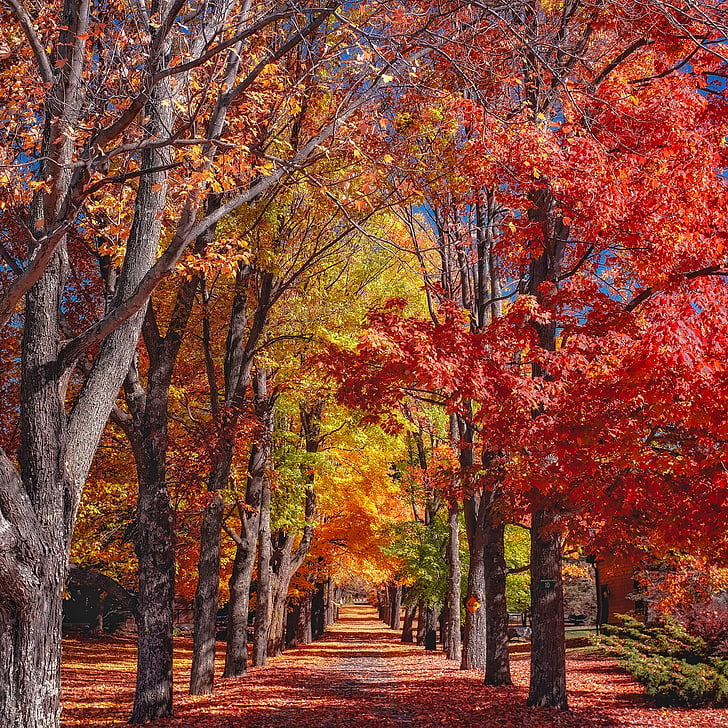With proper care, residential landscapes can take advantage of the benefits offered by ornamental trees and shrubs. From fertilization to winter and fall tree and shrub care, there are several essential steps needed to ensure healthy plants and beautiful lawns. Using a customized, slow-release fertilizer applied in late fall encourages root absorption while allowing for stored nutrients throughout the winter months, boosting health and providing protection from disease and drought.
Homeowners take immense pride in their beautiful lawns, and for good reason. From weed control to fertilization, aeration, and seeding, proper lawn care is essential for landscape management. However, trees and shrubs often get forgotten about. Ornamental trees and shrubs have the potential to greatly enhance the beauty of a property, yet professional care is too often neglected. To ensure healthy plants, winter and fall tree and shrub care should not be overlooked; luckily, there are plenty of tips available to help.
Fertilization for Residential Landscapes
Fertilization is an essential part of professional care for residential landscapes.
Benefits of Fertilization
Fertilizing plants in a residential landscape provides many benefits, including:
• Improved health and growth of trees and shrubs
• Enhanced color and appearance of plants
• Increased resistance to disease and damage from pests
• Added nutrients to the soil
Types of Fertilizer
When fertilizing trees and shrubs, it is important to choose the right type of fertilizer. Options include:
• Organic fertilizers such as compost or decomposed leaves
• Synthetic fertilizers with specific nutrient mixes
• Slow-release fertilizers that provide nourishment over time
Application Methods
Fertilizer should be applied according to the directions on the package. In general, it may be applied to the surface of the soil or incorporated into it. It is also important to water the area after application to ensure the fertilizer reaches the roots.
Professional care for residential landscapes is essential to ensure a long and healthy life for trees and shrubs. Fertilization is an important part of this care, as many plants in these environments need supplemental nutrients that can be found in organic material such as decomposed leaves. By fertilizing plants, homeowners can provide the additional nourishment needed for their trees and shrubs to thrive.
Fall Fertilizing for Trees and Shrubs
Fall is a crucial period for trees and shrubs, as the blend of warm soil and cool air encourages root growth in preparation for winter. Fertilizing at this time helps to build nutrients for the colder months, with the plants’ roots never ceasing activity. To aid this process, our custom-blended, slow-release fertilizer is applied late in the fall. This allows the roots to absorb the necessary nutrients and apply them to health-promoting functions such as disease and drought resistance, while any excess is stored and ready for new growth come spring.
:max_bytes(150000):strip_icc()/trees-shrubs-with-white-flowers-3269659-12-defc7ab66e8e47268283cbba75592bff.jpg)
Advantages of Fall Fertilization
Fall fertilization offers multiple advantages for plants. By providing nutrients directly to the roots, rather than just the foliage, plants can be better nourished and their leaves will remain vibrant and strong throughout the season. Moreover, a regular fertilization program during late fall can ensure that plants come back to life faster in the spring and remain healthy and disease-resistant throughout the year.
This is particularly important in the southeast, where hundreds of different insects and diseases can affect ornamental trees.
Pruning and Raking
Homeowners can take proactive steps to ensure their plants remain healthy during the fall season. Pruning and removing dead limbs or those that hang close to the ground is important, as is raking up any loose leaves or debris. Planting new plants or transplanting established ones in the fall is ideal due to the cooler temperatures, which reduce the chance of sun scorch or drought. Finally, applying a 2-3 inch layer of mulch around the plant base will help insulate the roots while retaining moisture and nutrients.
Trees and shrubs are an often neglected but crucial addition to any residential landscape. However, when given the proper care, they can greatly enhance the beauty of a property. To ensure healthy plants, winter and fall tree and shrub care should not be overlooked; professional fertilization late in the fall helps to build nutrients for the colder months and stores any excess so that the roots are prepared for new growth come spring. With some strategized care, trees and shrubs have the potential to transform any space.






